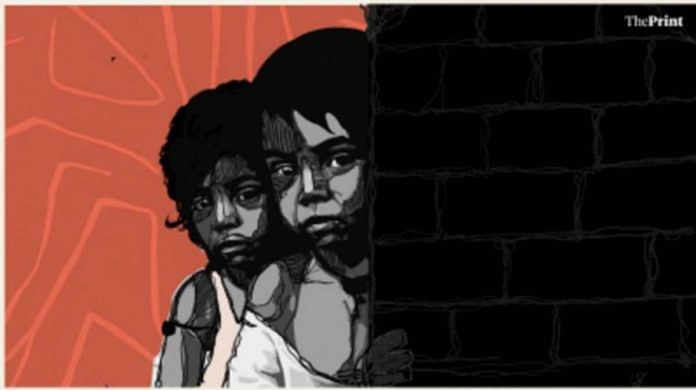Thank you dear subscribers, we are overwhelmed with your response.
Your Turn is a unique section from ThePrint featuring points of view from its subscribers. If you are a subscriber, have a point of view, please send it to us. If not, do subscribe here: https://theprint.in/
If there is one force that humankind in this era can neither destroy nor live without, it is the Internet. The digital world is no longer a luxury; it is an essential part of education, social interactions, and governance. However, with the alarming rise in online child sexual abuse cases, the danger looms large, and the solution remains elusive. There have been arguments for a blanket ban on children’s digital access which stand neither practical nor beneficial.
But why has online child sexual abuse been such a humungous, almost invincible crime so far?
Imagine a star-struck, unsuspecting child in a remote city in Bihar or Madhya Pradesh befriending someone supposedly in Mumbai. While the child may believe that she is chatting with a peer in Mumbai, in reality, she could be manipulated by a middle-aged predator masquerading as a teenager. Once trapped, the child may share personal images and even videos, believing them to be private. Unbeknownst to her, these images could be sold by the local predator to a bigger trafficking network, who further sell it an international trafficking ring operating in Europe. The video now becomes the commodity that is on sale on dark web and can now be downloaded by a predator in the Middle East, and circulated across various such platforms. The child, entirely unaware of the gravity of her actions, becomes a victim of an exploitative cycle beyond her control.
These networks thrive on encrypted platforms, dark web forums, and private messaging services that allow offenders to communicate without fear of immediate prosecution, and thus they often not only abuse children themselves but also engage in the distribution, sale, and production of Child Sexual Exploitative and Abuse material (CSEAM). The anonymity provided by digital platforms further provide huge protection to predators, making it imperative to disrupt these networks at multiple levels.
One of the biggest challenges in tackling online child sexual abuse is the exploitation of legal loopholes across different jurisdictions. The internet has no borders, but laws do. What is illegal in one country may not be adequately legislated against in another. These inconsistencies create a safe haven for abusers, who manipulate these gaps to commit and perpetuate their crimes.
For instance, in a petition filed by Just Rights for Children Supreme Court of India passed the landmark judgment in 2024 making the possession, downloading, and distribution of CSEAM as criminal offenses under the Protection of Children from Sexual Offences (POCSO) Act, 2012, and the Information Technology Act, 2000. However, the legal status of merely downloading CSEAM varies internationally, creating a huge chasm between nations. Similarly, while Australia has recently banned social media for children under the age of 16, the same is not true for other countries. Reports suggest that the United Kingdom is making the first legislative attempt to target the threats posed by AI tools that can generate CSEAM. But these attempts are globally scattered thus giving enough room to the violators to bend them, supersede them and hide from their net.
Given such differences in legal frameworks, along with cultural sensitivities, and bureaucratic red tape, law enforcement agencies often struggle with international cooperation. Delays in obtaining data from tech companies, weak enforcement of regulations in different regions, and conflicts between privacy laws and child protection efforts further exacerbate the problem.
Moreover, unlike physical crimes that are limited by geography and time, online child sexual abuse has a multiplying effect. A single instance of abuse can be recorded, shared, and resold thousands of times, trapping the victim in a vicious cycle of victimization and trauma. The permanence of digital footprints means that survivors of such abuse may never escape their trauma, as their images and videos continue to circulate online.
Another dangerous facet of online child sexual abuse is its intersection with human trafficking and online child sexual exploitation are deeply interconnected. Traffickers increasingly use online platforms to lure, trap, and exploit children, making the digital space a critical battlefield against child exploitation. Victims of trafficking are often coerced into creating CSEAM, which is then distributed across online platforms for profit. Some are even sold for live-streamed abuse, where perpetrators pay to direct the acts in real-time. The internet has not only facilitated but also industrialized this horrific crime.
The rise of cryptocurrency has further complicated the fight against online child abuse, as it allows traffickers and abusers to transact anonymously, making it difficult to trace financial trails and dismantle these operations.
The fight against online child sexual abuse is not just about laws, policies, or technology—it is about protecting the dignity and future of millions of children worldwide. This is a crisis that transcends borders, politics, and industries, demanding nothing less than a unified global response.
We stand at a crossroads where we can either let these crimes continue unchecked in the shadows of the dark web or take decisive action to disrupt and dismantle these networks. Governments must prioritize child protection in their digital policies, technology companies must be held accountable for their platforms, and law enforcement must be equipped with the tools and international cooperation needed to combat these crimes at scale.
These pieces are being published as they have been received – they have not been edited/fact-checked by ThePrint.


